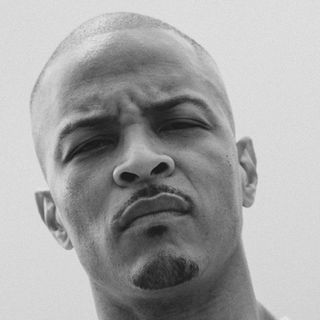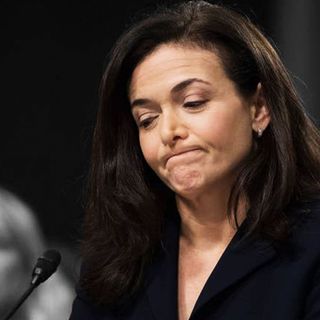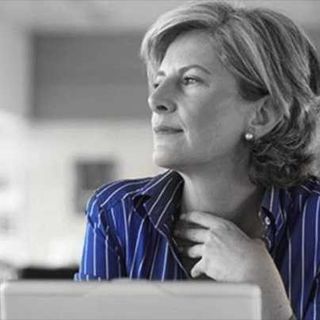
Looksmax, Redpill, Femoid: Dissecting Incel Language and Ideology
Incel culture is hideous, but it’s also a reflection of the ugliest part of our mainstream beliefs.

The language used by incels — (mostly) men who are involuntarily celibate — has increasingly permeated the mainstream, from critics calling the protagonist in the latest Joker movie an incel, to words such as ‘Chad’ and ‘Stacy’ increasingly popping up on social media. Understanding incel language, then, can provide an insight into how the subtle gender biases by which all of us live our lives become exaggerated. When looked at through the lens of (mostly) men who blame women for their sexless lives, who normalize hate, even violence against women, and who refuse to take accountability for their behavior, these gender norms, perhaps considered benign before, start to look dangerous.
The incel community was created in the 1990s as an online support group for people who found it awkward to talk to or date other people; today, it is a toxic community that promotes hate against a society in which they don’t feel valued, liked or desired, because of their appearances. And while incels are otherized on the Internet today, especially after a self-proclaimed incel drove through a crowd in Toronto killing several people, how they perceive the world is not far off from how ‘normies’ — as they would call the rest of us — view gender roles and expressions. The incel view of societal norms might be blown out of proportion, and might not apply to everyone, but deep down, the root cause of an incel’s isolation lies not in their own minds, but in the fabric of society that lets gender stereotypes abound.
How incels view women
A common theme that jumps out when scrolling through incel forums is the hate incels normalize toward women, which is often couched in how much they hate their own physical appearance. Incels may blame their own physical appearance for not being able to attract women, but they also blame women for not being able to see past their physical appearance and for rejecting them. The root cause changes depends on who’s doing the hating, but more often than not, incels believe it’s the women — as a general population — whose shortsightedness makes incels the way they are.
In incel world, the perfect, conventionally beautiful woman is often referred to as “Stacy”; she is a desired, powerful woman by way of her looks, who can get any guy she wants, whom incels think is mostly a “Chad” — the stereotypical jock in college-turned-multimillionaire, tall, white man — and “Brad,” the lighter, less successful, and less charming version of Chad. While there may be hierarchies to how incels see women different from the stereotypical Stacy, they also predominantly believe that women, by virtue of being so, can choose any sexual partner they want. It is this power that incites their hatred for women — the power to be able to pick and choose any partner to date or to have sex with is one incels don’t have, and one that often drives them to entertain violent thoughts against women.
Incels have several derogatory words for women, including “femoid,” which is a combination of female and humanoid, according to Urban Dictionary, and alludes to women having a less-than-human status in their minds. Another term is “roastie,” which incels use for a woman who has had sex; some incels think a woman’s value decreases every time she has sex, which adds another layer of hate on top of the already existing bucketful of envious derision they harbor.
Related on The Swaddle:
Unlearning My Family’s Toxic Masculinity
Any of this sound familiar? Sure, this is an extreme perception of women. But it’s nothing we haven’t seen before — Disdain for women and a tendency to treat women as objects and, therefore, as less than human have long been mainstays of society. Treating women asonly good for sex, and then disrespecting them for being sexually active, or viewing wives as housekeepers only good for providing food or care, are all relatively benign-sounding versions of the femoid or the roastie. All incels have done is codify into hatred the misogyny society already normalizes by giving women fewer opportunities to advance in the workplace, confining women to home and hearth and kids, by making women feel unsafe in public.
And while incels’ hatred toward women is almost universally condemned by the rest of society, conversations around the root of these stereotypes — how to raise boys, how to treat gender and beauty as social, unnecessary constructs — are seldom had.
How incels view themselves
In The Matrix, Morpheus (Laurence Fishburne) gives Neo (Keanu Reeves) a choice: a red pill that shows reality for what it is, and a blue pill that allows for an existence replete with ignorant comfort. This rhetoric has been adopted by the incel community; “taking the red pill” means you have figured out your place in the world, especially appearance-wise. Governed by the belief that women are only attracted to conventionally attractive men, swallowing the red pill would mean incels accept that they are neither Brad nor Chad, and therefore not considered desirable by women, a fact they mostly attribute to their physical appearance.
When we look at the larger society, this rhetoric doesn’t seem too far off from beauty norms we impose on men — from the macho or mustachioed looks of Bollywood heroes past to the lean, bearded, sharp-jawed looks of today’s models, there is a very narrow definition in which a man can look desirable, if inferred from pop culture. Toxic notions of masculinity also value strength in men, with the fad of muscular men — bulky and otherwise — finding a space in media and in people’s imaginations through time.
Putting store in how one looks, judging others by their looks, and expecting to be judged by others on the basis of an arbitrary value assigned to those looks, is an accepted practice every single person participates in — if incels have taken it one step further and codified it, there’s your example of how unrealistic beauty standards can detrimentally harm people at large, shattering their confidence to an extent that begets mass violence in some cases.
Related on The Swaddle:
The Batman-Joker Universe Offers a Crucial Platform to Talk About Mental Health
This also has a racial angle. Asian incels often identify as “Currycels” and “Ricecels,” and are obsessed with “whitemaxing” their physical appearance — that is, using fairness creams or surgery to seem more like a white man. This is much like how Euro-centric beauty standards manifest in black and brown communities, for all genders — a fairer, hairless ideal that leads to an ingrained sense of inferiority that ultimately results in a beauty hierarchy codified between the East and the West.
Incels are “mogged,” or intimidated and overshadowed, by Chads and Brads. In a world wherein all men are bifurcated into “alphas” and “betas,” the Chads and Brads are the alphas — because of their ‘perfect’ physical appearance and ability to get women — and the incels are the betas, constantly emasculated and rejected. In non-incel world, this constant comparison also means women are treated as prizes (and therefore, objects) — if the goal is to ‘get’ women, then the in-fighting and one-upping seldom allows for respectful human connections.
But there is still hope in the incel world: “looksmax” is an umbrella term used by incels to define the various processes and procedures they can undergo to become a Brad or Chad. In a process of change called “Ascension,” incels could go to the gym to change their physical appearance (“gymcel”), take steroids to develop muscles (“roidcel”), engage in “bonesmashing” — a process of damaging facial bone structure in order to permanently alter it — or undergo facial reconstruction surgeries, usually on the jawline, cheekbones and eye sockets. In the West, a lucrative plastic surgery industry exists to entertain incels’ desire to get under the knife multiple times during their lifetime, which critics say is a questionable ethical practice because there seems to be no end to incels’ Ascension; the problem doesn’t lie in their physical appearance, but in their perception of their physical appearance.
But a similar industry thrives on women’s insecurities also — getting too old? Fix the wrinkles. Breasts too small? Get a boob job Eyes too Asian-looking? Get double eyelid surgery. In mainstream society, these procedures are now being co-opted under feminism as choices — ‘it’s my choice to whatever to my body and that is inherently feminist’ — but stem from a similar self-hatred that has led to its exaggerated manifestation within incels.
Some incels, however, end up giving up on looksmax, and “swallow the black pill,” which means entering a state of resignation; at this point, there remain no changes incels could make to their physical appearance that could make them attractive to women. Another term quite common on incel forums is “LDAR,” or “lay down and rot,” which also means giving up on any physical self-improvement.
The physical violence that incels have been associated with, especially in light of the Toronto accident and the killing spree a California man, Elliot Rodger, went on in 2014, can arise from resulting frustration. In a world wherein there is no hope for a better life for the incel, some, especially those influenced by far-right ideologies of how to assert toxic masculinity (through violence) can go “full ER,” i.e. show their frustrations and assert their identity via mass killings, like Rodger did. It’s important to note all incels are not at risk of inflicting violence on others — many may joke about going ER, or even fantasize about the possibility, but actually going through with harming others remains a practice accepted in only very small factions within the incel community.
The incel ideology was not created in a vacuum — it is directly informed by the gender roles and biases firmly entrenched in society today. For men who seemed to realize they weren’t wanted in a society that values a narrow definition of beauty, these gender roles and gender biases became amplified, so much so that they started attributing all their problems to said norms.
And okay, blaming society to escape accountability is the M.O. of the incel, but hear me out: otherizing a group of men — who, granted, should be more responsible about their own words and actions — rids us all from taking responsibility for the heteronormative gender norms that led to an incel uprising, as many have claimed is happening, in the first place.
Rajvi Desai is The Swaddle's Culture Editor. After graduating from NYU as a Journalism and Politics major, she covered breaking news and politics in New York City, and dabbled in design and entertainment journalism. Back in the homeland, she's interested in tackling beauty, sports, politics and human rights in her gender-focused writing, while also co-managing The Swaddle Team's podcast, Respectfully Disagree.
Related


Women CEOs Judged More Harshly for Ethics Violations Than Male Peers, Study Finds
